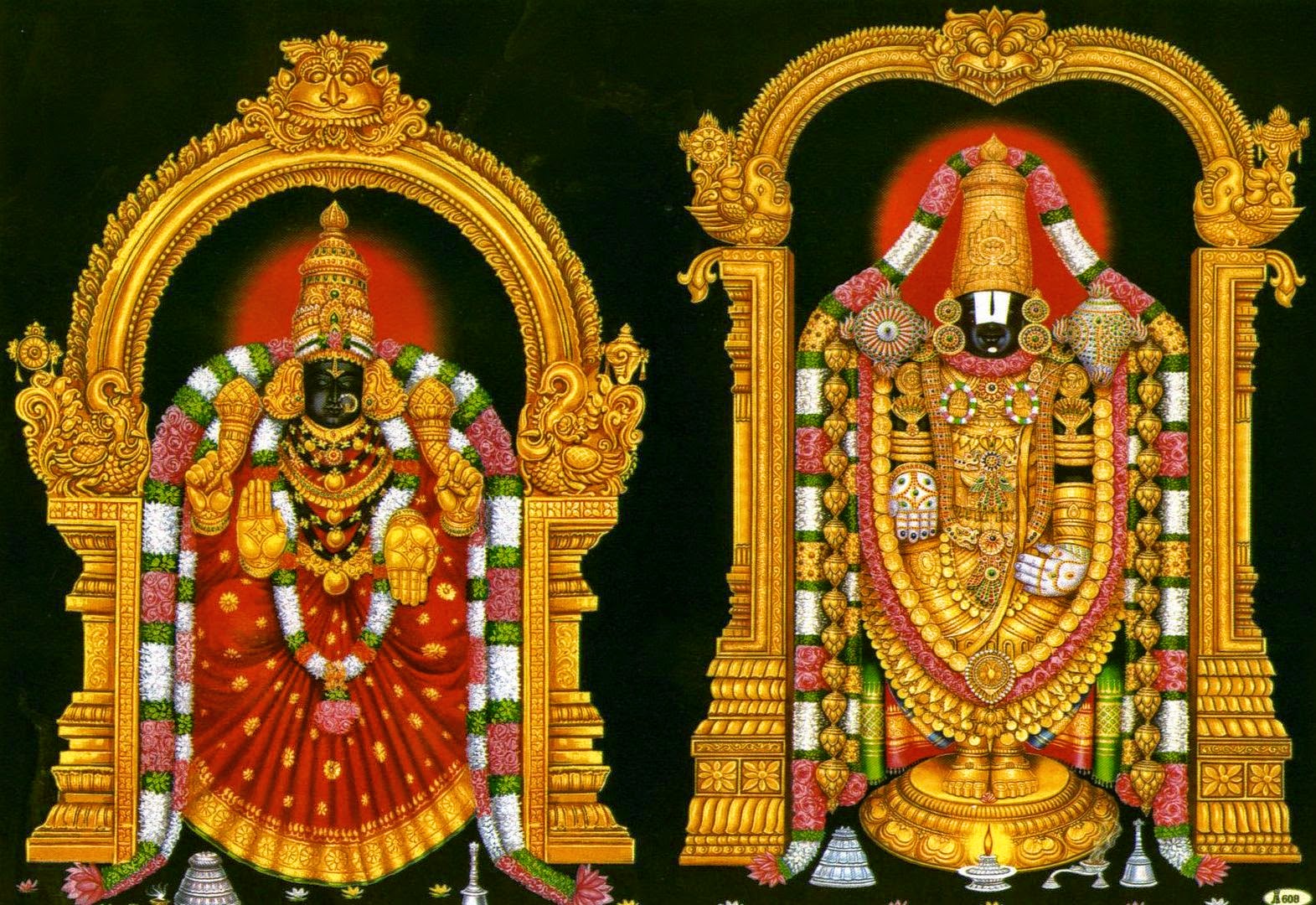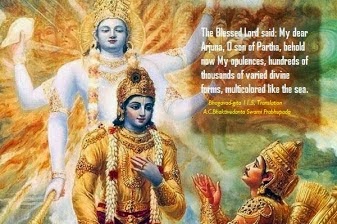The Philosophy of the Bhagavadgita - 3.3. Swami Krishnananda
========================================================================
========================================================================
27/11/2019.
Chapter 3: The Spirit of True Renunciation -3.
=======================================================================
Arjuna was such a person, and he stands as a symbol for any person, anywhere, at any time, a simple person embodying in his personality the forte and foible of anyone. The strength and the weakness of man can be seen in Arjuna. Every one of us, anywhere, has a strength but also a weakness. All these points have to be taken into consideration. We should not unnecessarily underline the weaknesses of ourselves, ignoring our strengths, nor should we go to the other extreme of imagining that we are all-in-all and that we are free from every defect.
We are in a world of conflicts and forces, rajas, which pulls us outward in the direction of space, time and objects through the avenues of the senses, and sattva, which keeps us intact, integrated in our own selves and in our own status. The stability of our personality is maintained by the sattva that is present in us, and the distractedness of our life is caused by rajas, which also preponderates simultaneously, in some measure. And a feeling of enough with work, the getting fed up with things, an exhaustion, a tiredness that we often feel in life is the result of tamas, the principle of inertia.
All these are to be found in us at all times. We are sattvika, rajasika and tamasika, at every time. Only one of these properties comes to the surface at a time, putting down the other two, or at least one goes down sometimes, and we appear to be in a particular mood of the hour. The mood can change. Even our ideas can vary; our outlook can completely get transformed for reasons we cannot easily understand, due to the coming to the level of our consciousness of these properties, one or the other— sattva, rajas or tamas.
These properties, or qualities, which are psychological and individual, as well as physical and cosmical, work in various ways and constitute not only the body of the objects of sense, including our own bodies as subjects, but in a subtle form make up our psychological organ, so that, as the Gita itself says in one place, there is nothing anywhere which is not a compound or complex of these three gunas, i.e., sattva, rajas and tamas. Neither on earth nor in heaven can we find anything, anywhere, which is not the result of a permutation or combination of the three gunas. One may be an angel in heaven, or a mortal here in this world, but all these forms are constituted of the gunas.
So, the human being, in the human context, finds himself in an arena of conflicts of these forces; and the battle of life, so-called, is nothing but the field of the action and reaction of these forces. The battle of the Mahabharata or any battle whatsoever, inward or outward, is the colour and the shape that these forces put on when they commingle in the interest of cosmic evolution. They collide one with the other.
There is a collision of the thesis with the antithesis for a higher purpose of the evolution of the individuality of both the thesis and the antithesis, and there is a coming together of both in a blend to form a totally new thing altogether, giving birth to a new baby, as it were, in the form of a synthesis which transcends the lower opposing categories.
To be continued ....
========================================================================
========================================================================
27/11/2019.
Chapter 3: The Spirit of True Renunciation -3.
=======================================================================
Arjuna was such a person, and he stands as a symbol for any person, anywhere, at any time, a simple person embodying in his personality the forte and foible of anyone. The strength and the weakness of man can be seen in Arjuna. Every one of us, anywhere, has a strength but also a weakness. All these points have to be taken into consideration. We should not unnecessarily underline the weaknesses of ourselves, ignoring our strengths, nor should we go to the other extreme of imagining that we are all-in-all and that we are free from every defect.
We are in a world of conflicts and forces, rajas, which pulls us outward in the direction of space, time and objects through the avenues of the senses, and sattva, which keeps us intact, integrated in our own selves and in our own status. The stability of our personality is maintained by the sattva that is present in us, and the distractedness of our life is caused by rajas, which also preponderates simultaneously, in some measure. And a feeling of enough with work, the getting fed up with things, an exhaustion, a tiredness that we often feel in life is the result of tamas, the principle of inertia.
All these are to be found in us at all times. We are sattvika, rajasika and tamasika, at every time. Only one of these properties comes to the surface at a time, putting down the other two, or at least one goes down sometimes, and we appear to be in a particular mood of the hour. The mood can change. Even our ideas can vary; our outlook can completely get transformed for reasons we cannot easily understand, due to the coming to the level of our consciousness of these properties, one or the other— sattva, rajas or tamas.
These properties, or qualities, which are psychological and individual, as well as physical and cosmical, work in various ways and constitute not only the body of the objects of sense, including our own bodies as subjects, but in a subtle form make up our psychological organ, so that, as the Gita itself says in one place, there is nothing anywhere which is not a compound or complex of these three gunas, i.e., sattva, rajas and tamas. Neither on earth nor in heaven can we find anything, anywhere, which is not the result of a permutation or combination of the three gunas. One may be an angel in heaven, or a mortal here in this world, but all these forms are constituted of the gunas.
So, the human being, in the human context, finds himself in an arena of conflicts of these forces; and the battle of life, so-called, is nothing but the field of the action and reaction of these forces. The battle of the Mahabharata or any battle whatsoever, inward or outward, is the colour and the shape that these forces put on when they commingle in the interest of cosmic evolution. They collide one with the other.
There is a collision of the thesis with the antithesis for a higher purpose of the evolution of the individuality of both the thesis and the antithesis, and there is a coming together of both in a blend to form a totally new thing altogether, giving birth to a new baby, as it were, in the form of a synthesis which transcends the lower opposing categories.
To be continued ....
========================================================================





Comments